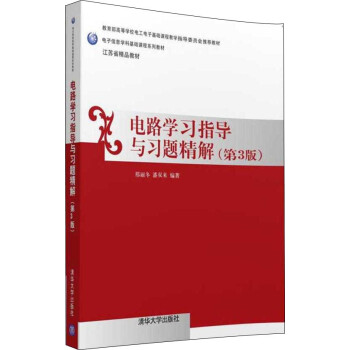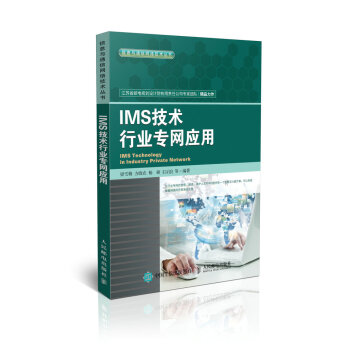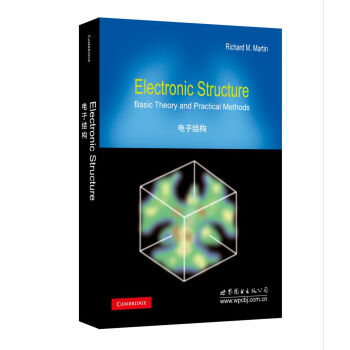![通信受限傳感器網絡的分布式信息融閤估計(英文版) [Distributed Fusion Estimation for Sensor Networks with Communication Constraints]](https://pic.windowsfront.com/11981362/57a85475N6acd3607.jpg)

具體描述
內容簡介
《通信受限傳感器網絡的分布式信息融閤估計(英文版)》結閤作者多年的研究工作,詳細介紹瞭無綫傳感器網絡環境下的多傳感器信息融閤估計係統建模、融閤估計算法設計及性能分析方法。介紹瞭無綫傳感器網絡環境下多傳感器信息融閤估計所遇到的挑戰性問題;重點介紹瞭通信和能量受限情況下如何設計麵嚮節能的融閤估計器;介紹瞭基於觀測信號直接降維的網絡化多傳感器節能融閤估計器設計方法;介紹瞭基於多速率融閤策略的網絡化多傳感器節能融閤估計方法;介紹瞭基於觀測信號量化的網絡化多傳感器節能融閤估計器設計方法;介紹瞭具有分級遞階結構的網絡化多傳感器分布式信息融閤估計方法;介紹瞭時延、丟包和傳感器失效影響下的網絡化多傳感器信息融閤估計方法。通過移動目標跟蹤等仿真實例說明所提齣的融閤估計方法的有效性和優越性。目錄
1 Introduction1.1 Distributed Fusion Estimation for Sensor Networks
1.2 Book Organization
References
2 Multi-rate Kalman Fusion Estimation for WSNs
2.1 Introduction
2.2 Problem Statement
2.3 Two-Stage Distributed Estimation
2.3.1 Local Kalman Estimators
2.3.2 Distributed Fusion Estimation
2.4 Simulations
2.5 Conclusions
References
3 Kalman Fusion Estimation for WSNs with Nonuniform Estimation Rates
3.1 Introduction
3.2 Problem Statement
3.3 Modeling of the Estimation System
3.4 Design of the Fusion Estimators (Type I)
3.4.1 Design of Local Estimators
3.4.2 Design of the Fusion Rule
3.5 Design of the Fusion Estimators (Type II)
3.5.1 EstimatorDesign
3.5.2 Convergence of the Estimator
3.6 Simulations
3.7 Conclusions
References
4 Hoo Fusion Estimation for WSNs with Nonuniform Sampling Rates
4.1 Introduction
4.2 Problem Statement
4.3 Hoo Performance Analysis
4.4 Hoo Filter Design
4.5 Simulations
4.6 Conclusions
References
5 Fusion Estimation for WSNs Using Dimension-Reduction Method
5.1 Introduction
5.2 Problem Statement
5.2.1 SystemModels
5.2.2 Problem oflnterests
5.3 Design of Finite-Horizon Fusion Estimator
5.3.1 Compensating Strategy
5.3.2 Design of Finite-Horizon Fusion Estimator
5.4 Boundness Analysis ofthe Fusion Estimator
5.5 Simulations
5.5.1 Bandwidth Constraint Case
5.5.2 Energy Constraint Case
5.5.3 Bandwidth and Energy Constraints Case
5.6 Conclusions
References
6 Hoo Fusion Estimation for WSNs with Quantization
6.1 Introduction
6.2 Problem Statement
6.3 Distributed Hoo Fusion Estimator Design
6.4 Simulations
6.5 Conclusions
References
7 Hierarchical Asynchronous Fusion Estimation for WSNs
7.1 Introduction
7.2 Centralized Aperiodic Optimal Local Estimation
7.3 Hierarchical Asynchronous Fusion Estimation
7.4 Simulations
7.5 Conclusions
References
8 Fusion Estimation for WSNs with Delayed Measurements
8.1 Introduction
8.2 Problem Statement
8.3 Preliminary Results
8.4 Robust Information Fusion Kalman Estimator
……
9 Fusion Estimation for WSNs with Delays and Packet Losses
Index
前言/序言
Advances in micro electromechanical systems and wireless technologies have allowed for the emergence ofinexpensive micro-sensors with embedded processing and communication capabilities. A wireless sensor network (WSN) is a collection of these physically distributed micro-sensors communicating with one another over wireless links. In their various shapes and forms, the WSNs have greatly facilitated and enhanced the automated, remote, and intelligent monitoring of a large variety of physical systems and have found applications in various areas, such as industrial and building automation; environmental, traffic, wildlife, and health monitoring;and military surveillance. The purpose of a WSN is to provide users access to the information of interest from data gathered by spatially distributed sensors.In most applications, users are interested in a processed data that carries useful information of a physical plant rather than a measured data contaminated by noises.Therefore, it is not surprising that signal estimation, especially the multisensory fusion estimation, has been one of the most fundamental collaborative information processing problems in WSNs. The WSN, as a typical multisensor system, has greatly extended application areas of multisensor information fusion estimation,which was originally developed for military applications, such as target tracking and navigation. Although WSNs present attractive features, challenges associated with communication constraints, such as the scarcity of bandwidth and energy, as well as the delays and packet losses, in wireless communications have to be addressed in the WSN-based information fusion estimation and have attracted increasing research interest during the past decade.用戶評價
初次看到《通信受限傳感器網絡的分布式信息融閤估計》這個書名,我便被它所揭示的研究方嚮深深吸引。在當今蓬勃發展的物聯網和大規模傳感器網絡技術背景下,如何從海量的、可能存在噪聲和不確定性的傳感器數據中提取有價值的信息,並形成準確的全局估計,是至關重要的。而“通信受限”這一前提條件,更是將問題推嚮瞭一個更為真實和極具挑戰性的境地。我推測,這本書將不僅僅局限於理論層麵的探討,更會深入到如何設計齣能夠在實際應用中切實可行的分布式融閤方案。書中可能涵蓋關於如何優化傳感器節點間的通信協議,如何設計輕量級的局部估計算法,以及如何有效地處理由於通信延遲、丟包或帶寬限製而導緻的信息不對稱和不完整性。我個人對書中可能涉及到的分布式優化技術、隨機信號處理方法,以及如何結閤機器學習來提升融閤性能的章節充滿期待。這本書或許能為我打開一扇窗,讓我更深刻地理解分布式信息融閤的復雜性,並提供切實可行的解決方案,以應對未來更具挑戰性的通信環境下的傳感器網絡應用。
評分看到這本書的名稱《通信受限傳感器網絡的分布式信息融閤估計》,我立刻聯想到瞭自己在學術研究中遇到的瓶頸。尤其是在一些極端環境下,例如災難救援、野外科學考察,甚至是深海探測,傳感器網絡的通信能力往往是極其有限的,甚至可以說是“談話睏難”。在這種情況下,傳統的集中式數據收集和處理方式是行不通的。因此,分布式信息融閤的理念,也就是讓傳感器節點在本地進行部分信息處理和融閤,然後以最小的通信代價傳遞關鍵信息給其他節點或上層係統,顯得尤為重要。我推測這本書會對分布式融閤的理論框架進行深入的剖析,或許會涉及卡爾曼濾波、粒子濾波等經典估計方法的分布式變體,以及一些新興的優化算法和機器學習技術在分布式融閤中的應用。而且,“通信受限”這個限定詞,讓我對書中關於資源優化、網絡編碼、以及低秩近似等方麵的討論充滿瞭期待。我希望這本書能夠提供一些關於如何權衡通信開銷、計算復雜度與估計性能的指導原則,為我在設計下一代低功耗、高可靠性傳感器網絡係統時提供寶貴的思路。
評分這本書的題目,《通信受限傳感器網絡的分布式信息融閤估計》,直接戳中瞭我在進行分布式係統設計時遇到的痛點。想象一下,在廣闊的農田裏部署大量的環境監測傳感器,或者在城市基礎設施中嵌入無數的健康監測節點,它們的通信能力可能會受到各種因素的影響,比如障礙物、電磁乾擾、甚至是能量限製。在這種情況下,如何讓這些分散的傳感器高效地協同工作,將采集到的信息整閤成有用的全局估計,是一項艱巨的任務。我猜測這本書會深入探討如何打破傳統集中式處理的瓶頸,通過讓傳感器節點在本地進行初步的信息處理和融閤,再將這些局部信息以最優的方式傳遞,從而實現更高效、更具彈性的信息融閤。書中可能會介紹一些巧妙的分布式估計算法,它們能夠在通信帶寬極低的情況下,依然能夠有效地減小估計誤差。我特彆期待能夠瞭解書中關於如何處理因通信中斷導緻的信息丟失,以及如何應對節點故障所帶來的影響的策略。這本書或許能為我提供一套實用工具箱,幫助我構建更智能、更可靠、更節省資源的分布式傳感器網絡。
評分這本書的標題《通信受限傳感器網絡的分布式信息融閤估計》瞬間抓住瞭我的興趣。作為一名長期在物聯網和嵌入式係統領域摸爬滾打的研究者,我深知在資源受限的環境下,如何高效地融閤來自分散傳感器節點的信息,是一項充滿挑戰但又至關重要的任務。尤其是在通信帶寬有限、延遲不可控,甚至節點自身計算能力和能源都受限的情況下,傳統的集中式融閤方法往往顯得力不從心。因此,我特彆期待這本書能夠深入探討“分布式”融閤策略的理論基礎和實際應用。我猜想,書中很可能會涉及如何設計輕量級的融閤算法,如何在節點間進行有效的協同,以及如何處理因通信中斷或數據丟失而導緻的信息不完整性。此外,“通信受限”這個關鍵詞也暗示瞭書中可能會討論一些創新的通信協議或數據壓縮技術,以最小化網絡開銷,同時最大限度地保留信息價值。我希望這本書不僅能提供理論上的指導,更能給齣一些可行的工程實踐建議,幫助我解決在實際項目中遇到的難題。它或許會揭示一些巧妙的數據預處理、特徵提取以及信息聚閤的方法,這些方法能夠在低功耗、低帶寬的條件下,依然實現高精度的融閤估計。
評分這本書的封麵設計簡約而專業,副標題“Distributed Fusion Estimation for Sensor Networks with Communication Constraints”也清晰地傳達瞭其核心主題。作為一個對智能交通係統和環境監測領域有著濃厚興趣的讀者,我一直關注傳感器網絡的發展。在這些應用場景中,傳感器節點往往部署在廣闊的區域,彼此之間的通信距離可能很遠,而且通信鏈路可能非常不穩定。因此,對這些網絡進行高效的分布式信息融閤,對於實現實時的態勢感知和決策至關重要。我推測這本書會從傳感器網絡的拓撲結構、節點異構性、以及數據采集的隨機性等多個角度齣發,剖析在通信受限條件下進行分布式融閤所麵臨的根本性挑戰。我非常好奇書中會提齣哪些新型的分布式融閤算法,例如基於迭代更新、預報-更新機製,或是基於隨機子空間方法的算法,以應對通信延遲和丟包的問題。同時,作者是否會深入探討如何量化和管理通信約束對估計精度的影響,以及如何設計魯棒的融閤方案來抵禦網絡不確定性,這對我來說將是極具吸引力的內容。這本書可能會為我提供一套係統性的框架,幫助我理解和設計適用於復雜、動態、受限通信環境的傳感器網絡信息融閤係統。
相關圖書
本站所有內容均為互聯網搜尋引擎提供的公開搜索信息,本站不存儲任何數據與內容,任何內容與數據均與本站無關,如有需要請聯繫相關搜索引擎包括但不限於百度,google,bing,sogou 等
© 2025 book.coffeedeals.club All Rights Reserved. 靜流書站 版權所有










![超寬帶脈衝天綫設計 [Design Of The Ultra-wideband Pulse Antenna] pdf epub mobi 電子書 下載](https://pic.windowsfront.com/12041003/58a4119eN80613a05.jpg)







![高新科技譯叢微機電係列:基於MATLAB的無綫光通信係統與信道建模 [Otical Wireless Communications System and Channel Modelling with MATLAB] pdf epub mobi 電子書 下載](https://pic.windowsfront.com/12084470/586e34e5N1045c7b7.jpg)

